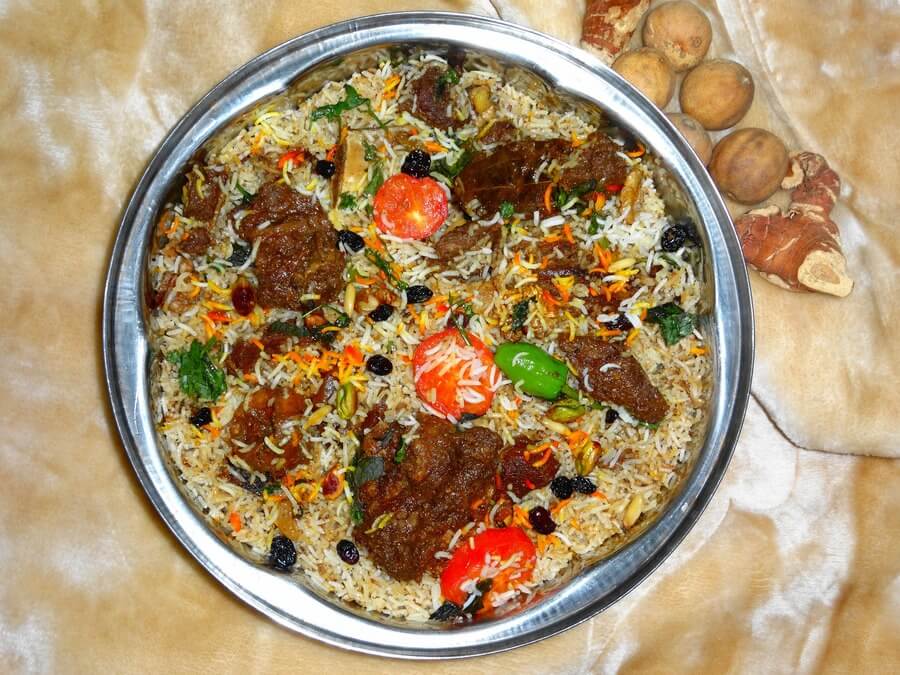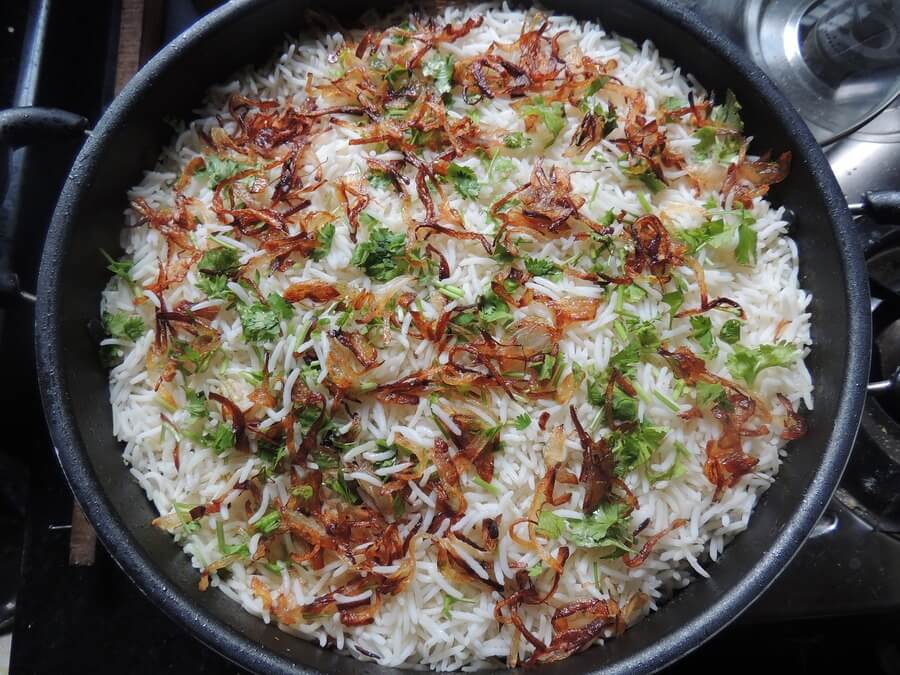A history of Biryani
Understanding Spices
Your cart is empty.
SUBTOTAL
£0.00

Understanding Spices
Biryani – that delicious Indian dish consisting of rice flavoured with spices and layered with either lamb, chicken, fish or vegetables and a thick gravy. Each region of India varies when it comes to the type of meat and spices used, so if you happen to be looking for biryani in India, you’ll be spoilt for options. It’s the kind of dish that you can have at any occasion, from a formal wedding to Sunday lunch with the family.
So what makes a good biryani? Some of the must-haves include:
The spices used in biryani can be whole, ground, used individually or blended into a spice mix. While additional spices are sometimes added to give a distinctive flavour, the main ones are:

Although there is plenty of debate surrounding the origins of biryani, it’s widely agreed that its roots started in Persia. The word biryani can even be traced back to the original Persian words ‘birinj biryan’ meaning fried rice.
There are several fascinating theories to how the dish first arrived in India. One theory was that biryani came to India via the southern Malabar coast. Arab traders regularly made stops on the coast, bringing this dish with them. Ancient Tamil literature dating as far back as AD 2 shows evidence of a rice dish called Oon Soru. This was made with rice, ghee, turmeric, coriander, pepper and bay leaves.
Another theory that has become a folk favourite can be traced back to Mumtaz Mahal, Shah Jahan’s queen and the inspiration behind the iconic Taj Mahal. It’s said that she was shocked to see the state of the Mughal soldiers, who were weak and undernourished. She ordered her cooks to come up with a special dish of meat and rice to be served to the soldiers – and so biryani was born.
However, there is one theory that is the most plausible. Timur, the Turk-Mongol conqueror brought the foundations of the dish when he arrived in India in 1398. A clay pot filled with rice, spices and meat would be cooked in a hot pit and this was thought to be the staple diet of Timur’s army. This easy method of cooking gave the soldiers a meal that was both hassle-free and nutritious. As the dish was so tasty, it gradually spread to other regions in India, the ingredients and cooking process changing with time and place.

Going from an army dish to food for royalty, biryani is a favourite all over India. Local cultures, traditions, tastes and ingredients have all impacted the many different varieties of biryani. These are just a few of the varieties every biryani fan should know about:
The Mughal emperors viewed cooking as an art and were known for their extravagant dining experiences. As a result, the Mughlai biryani is one of the more sumptuous variations. Large chunks of succulent meat and kewra scented rice make it a dish fit for a king.
Hyderabadi biryani is one of the more well-known variations. Emperor Aurangzeb appointed Nizam Ul Mulk as the new leader of Hyderabad who ruled in the 18th century. His chefs created almost 50 varieties of the dish using a range of meats including fish, shrimp, quail, deer and hare meat. But unlike other versions, Hyderabadi biryani’s main feature isn’t the meat but the aromatic saffron.
Calcutta biryani typically uses much less meat than other regions, with the addition of golden brown potatoes and a hint of sweetness.
Lucknowi biryani from the northern region of India has a softer texture with much milder spices. This type of biryani uses a meat stock infused with spices which gives it a more moist and tender texture compared to other variants.
This spicy version of biryani comes from the Gujarat-Sindh region of India and is typically made with lamb, browned onions and potatoes. It uses much less food colouring than other varieties, which allows the natural colours of the ingredients to come through.
This is quite a unique version of biryani and one of the most popular. It’s both sweet and savoury, combining soft chicken wings, kaima rice, sauteed cashew nuts, sultanas and fennel seeds. It’s interesting to note that the rice is cooked separately from the gravy and only mixed together when served.
This is another unique style of preparing biryani. In addition to the finely chopped green chillies and roasted nuts, what makes it different to other versions is that aloo bukhara (plums) are added to the spice mix to give it a sweet and fruity aroma. Generous helpings of sour yoghurt are used in the layers to give the biryani a tangy taste.
Not all biryani is cooked with meat. Vegetarian Hindus found a way to adapt the dish to meet their dietary requirements. Tahari biryani is cooked with a variety of vegetables, the most common being potatoes and carrots. It’s thought that the dish was created for the Hindu bookkeepers of the Muslim Nawab rulers. The dish became common in the Second World War when meat became a luxury.
These are just a few types of biryani out there. You can also put your own spin on it by adding your favourite meat, veg or herb.
Have a go with our Biryani spice blend.
Understanding Spices
Spices have long been integral to the UK's culinary landscape, adding depth, flavours, and richness to a myriad of dishes. From the pungent aroma of cumin in Indian curries to...
Read MoreUnderstanding Spices
Confetti is an essential part of any wedding day. Not only is it a wonderful way to greet a newlywed couple, but it also provides some beautiful photo opportunities. The...
Read MoreSeasonal Ideas
It’s no secret that any handmade gift will always be more special than a store-bought one. Homemade food gifts are especially wonderful, a labour of love that shows someone you...
Read MoreHealth and Wellbeing
It’s no secret that winter’s cold and gloomy weather makes us crave indulgent dishes like fondue and baked goods like sticky toffee pudding and apple crumble. While Christmas is the...
Read More